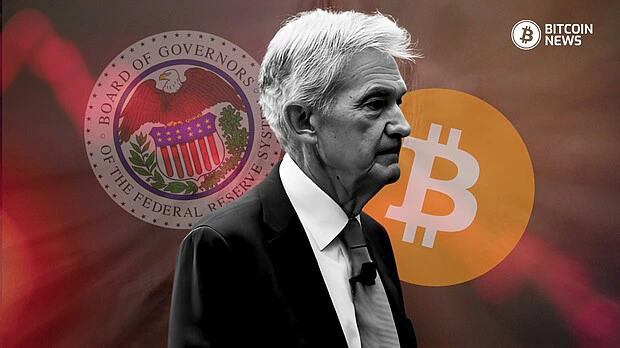The bitcoin market is bracing for a bumpy ride this September, as analysts predict that the digital asset could face significant volatility following the U.S. Federal Reserve’s upcoming interest rate decision.
As the world’s largest digital currency, bitcoin has already seen its price drop from a high of $65,000 in late August to around $59,000 at the start of September. Many experts believe that the Fed’s decision could cause even more dramatic swings in bitcoin’s value this month.
The Federal Reserve is widely expected to cut interest rates in mid-September, with most analysts anticipating a 25 basis point reduction.
However, there’s also a possibility of a more aggressive 50 basis point cut. According to Bitfinex analysts, either decision could have a significant impact on bitcoin’s price in the short term. A Bitfinex analyst explained:
“A 25 basis point cut could signal the start of an easing cycle, which might lead to long-term price growth for Bitcoin […] However, if the Fed opts for a 50 basis point cut, we could see an immediate price spike followed by a correction if recession concerns grow.”
This prediction aligns with Arthur Hayes, co-founder of BitMEX, who recently highlighted an unexpected factor that could affect bitcoin’s reaction to the Fed’s rate cut.
Hayes pointed to the high-interest rates offered by reverse repurchase agreements (repos) — currently at 5.3% — which are attracting large money market funds away from riskier assets like bitcoin.
He explained that, easy access to high-yield cash parking options is reducing the typical impact of interest rate cuts. Its suggesting that this could be why bitcoin prices have not risen as expected despite anticipation of a rate cut.
September has traditionally been a volatile month for bitcoin, with an average return of -4.78% since 2013 and typical declines of around 24.6%. Analysts believe this month could be no different.
Bitfinex forecasts suggest that bitcoin could dip by 15-20% after the Fed’s rate decision, potentially lowering its price to between $40,000 and $50,000.
The historical data shows that bitcoin’s price has often followed a similar pattern, with a short-term boost following rate cuts, only to experience a subsequent correction.
Some market watchers are concerned that the expected rate cuts may trigger what is known as a “sell the news” event. In such a scenario, traders initially react positively to the news but then quickly sell off their positions, causing a drop in prices.
Valentin Fournier, an analyst at BRN, noted that a Federal Reserve pivot on interest rates usually leads to a sell-off, saying:
“A Federal Reserve pivot on interest rates usually leads to a ‘sell the news’ event and the expected cut on Sept. 18 could lead to a dip toward the lower $50,000s,”
This view is echoed by Bitfinex analysts, who pointed out that during the last nine rate-cutting cycles, the stock market has seen brief sell-offs of up to 20% in the first month.
Bitcoin, which has become increasingly correlated with traditional risk assets like the S&P 500, could follow a similar pattern.
“If we apply a similar logic to the present, however, a 15-20 percent decline from Bitcoinʼs price at the time of a rate cut could be anticipated,” the analysts mentioned.
Bitcoin’s price is also being influenced by broader global economic conditions.
Central banks around the world, including the European Central Bank and the Bank of Japan, are also making moves that could impact bitcoin. Additionally, China’s recent efforts to inject liquidity into its slowing economy could have ripple effects across global markets.
In the U.S., recession fears are growing, fueled by indicators like rising unemployment and an inverted Treasury yield curve, which traditionally signals a high likelihood of a recession in the next 12 months.
As these recessionary signals intensify, risk assets like bitcoin could be hit hard. If signs of a recession impact risky assets, bitcoin might drop as much as 20% from its current value in the weeks following the U.S. Central Bank’s decision on interest rates.
Despite the uncertainty, some analysts remain cautiously optimistic about bitcoin’s long-term prospects.
If the Fed cuts rates by 25 basis points, it could lead to a gradual uptrend for bitcoin, signaling the Fed’s confidence in economic resilience. However, the market’s reaction could be more volatile if a 50 basis point cut is announced.
The possibility of a rate cut complicates market forecasts, but historically, when August finishes poorly, September has sometimes provided positive returns, defying the expectation of a negative month.
This suggests that while September could be a challenging month for bitcoin, there might still be room for surprises.










